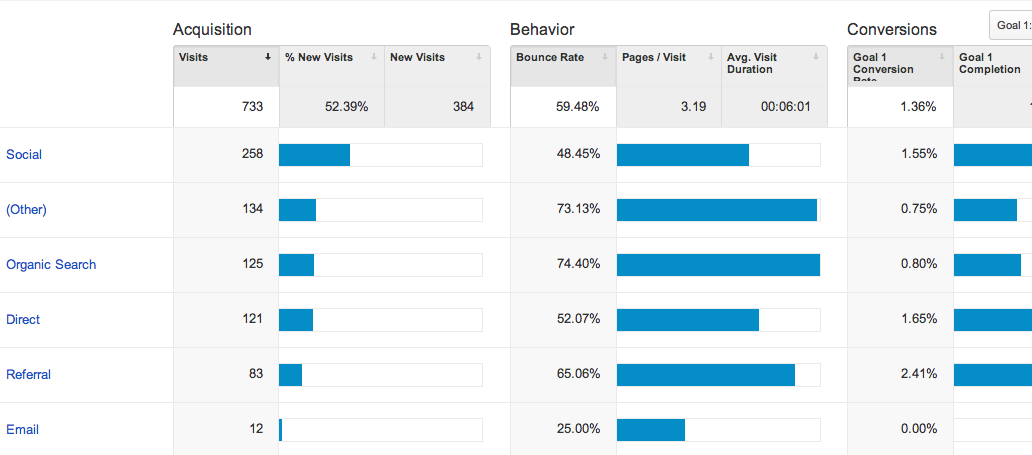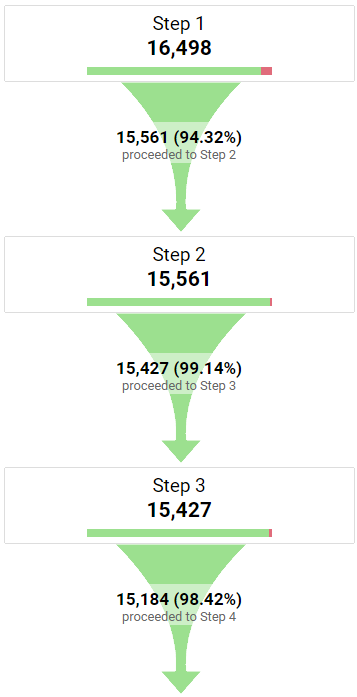What Data Is Google Analytics Goals Unable to Track and Why
What Data Is Google Analytics Goals Unable to Track and Why
Blog Article
Discover the Limitations of Google Analytics Goals: Unveiling the Information Kind That Remain Untrackable
As organizations progressively depend on data-driven decision-making, comprehending the constraints of tools like Google Analytics becomes paramount. While Google Analytics Goals offer valuable understandings into customer communications, there exist data kinds that elude monitoring, posing difficulties to an extensive understanding of customer actions. These untrackable data types raise inquiries about the accuracy and efficiency of the analytics information that organizations heavily trust for their digital strategies. Interested to reveal the concealed unseen areas in your information analysis procedure?
Insufficient Customer Journey Tracking
Incomplete user journey tracking within Google Analytics can impede the capability to properly assess user actions. When the individual trip is not completely tracked, there are spaces in the information that protect against a comprehensive understanding of just how users connect with a web site. This lack of insight can lead to missed chances for optimization and enhancements to the individual experience.
One typical concern with insufficient customer trip monitoring is the lack of ability to see the complete course that customers take in the past completing a goal or leaving the website. Without this information, it is challenging to recognize where customers might be coming across barriers or rubbing points that prevent them from converting. Furthermore, insufficient tracking can cover the influence of particular advertising efforts or site changes on user behavior.
To resolve this constraint, it is vital to establish correct monitoring mechanisms within Google Analytics to capture the entire user trip. This may include establishing occasion monitoring, objective funnels, or utilizing tools like Google Tag Supervisor to make certain that no vital communications go unrecorded. By acquiring an extensive sight of the individual trip, website proprietors can make more educated choices to improve user interaction and drive conversions.
Attribution Obstacles
Navigating with acknowledgment obstacles in Google Analytics requires a detailed understanding of how different touchpoints add to the general conversion procedure. Acknowledgment obstacles arise from the intricacy of modern-day customer journeys, where customers connect with multiple channels before transforming.
One typical acknowledgment difficulty is the trouble in attributing conversions to the appropriate resource, particularly in instances where customers connect with several channels before converting. Furthermore, cross-device monitoring poses one more acknowledgment difficulty, as users commonly switch over between tools during their journey, making it testing to track their communications perfectly.
Offline Conversions
Given the obstacles connected with attributing conversions accurately in online channels, the measurement of offline conversions presents a substantial chance for marketing professionals looking for a much more detailed understanding of their customers' trip. Offline conversions describe actions that customers absorb the physical world, such as making purchases in brick-and-mortar stores or over the phone, going to occasions, or engaging with printed materials - what data is google analytics goals unable to track. These conversions are critical for companies that run both online and offline, as they provide valuable understandings into the performance of advertising and marketing campaigns throughout different touchpoints
Tracking offline conversions commonly posed a substantial challenge for marketers, as it was challenging to connect these actions back to certain on the internet communications precisely. Nonetheless, with developments in modern technology, such as the assimilation of CRM systems, distinct identifiers, and voucher codes, businesses can try these out now connect the space between online and offline data to acquire a much more alternative sight of consumer behavior. By successfully determining offline conversions, online marketers can maximize their approaches, allot sources much more efficiently, and ultimately boost the total client experience.
Cross-Device Tracking
Cross-device tracking plays an important duty in recognizing the interconnected nature of consumers' electronic communications throughout numerous gadgets. In today's omnichannel globe, where individuals flawlessly switch in between mobile phones, desktops, and tablets, tracking their habits throughout these devices is important for online marketers to gain a thorough view of their consumer trip.

Furthermore, personal privacy problems and guidelines such as GDPR and CCPA have further challenging cross-device tracking. With customers requiring even more control over their data and boosted constraints on monitoring technologies, marketing professionals have to discover ingenious and privacy-compliant means to link customer communications throughout devices.
Dynamic Content Involvement
Recognizing customer engagement with dynamic material is critical in optimizing electronic advertising approaches for enhanced target market communication. Dynamic material describes site aspects that alter based upon user habits, preferences, or various other variables, providing a customized experience. Tracking user interactions with dynamic material postures obstacles for standard analytics tools like Google Analytics.
While Google Analytics can track fundamental communications like clicks and page sights, it may battle to record more nuanced interactions within dynamic content. what data is google analytics goals unable to track. Metrics such as time invested in specific dynamic components, float activities, or communications within pop-ups are frequently not quickly measurable utilizing common monitoring methods. This constraint prevents online marketers' ability to fully understand just how individuals are engaging with vibrant web content and tailor their strategies appropriately

Final Thought
To conclude, Google Analytics objectives have limitations in tracking incomplete user trips, connecting conversions precisely, capturing offline conversions, tracking cross-device communications, and determining vibrant web content engagement. These constraints highlight the relevance of look at these guys discovering extra tracking methods and devices to get a much more thorough understanding of individual behavior and conversions beyond what Google Analytics can offer.
While Google Analytics Goals offer beneficial understandings right into individual communications, there exist data types that avoid tracking, positioning challenges to a thorough understanding of user actions.Incomplete individual journey monitoring within Google Analytics can prevent the ability to precisely examine user behavior. When the customer trip is not fully tracked, there are voids in the data that avoid an extensive understanding of how users interact with an internet site.One common concern with incomplete individual trip tracking is the lack of ability to see the full path that customers take in the past completing a goal or leaving the site. By obtaining an extensive view of the user journey, website proprietors can make more educated choices to improve customer engagement and drive conversions.
Report this page